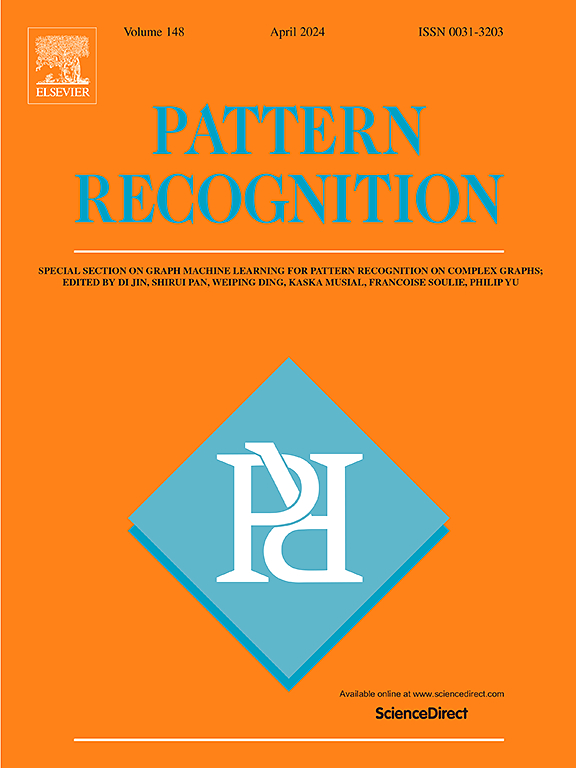Learning accurate and enriched features for stereo image super-resolution
IF 7.5
1区 计算机科学
Q1 COMPUTER SCIENCE, ARTIFICIAL INTELLIGENCE
引用次数: 0
Abstract
Stereo image super-resolution (stereoSR) aims to enhance the quality of super-resolution results by incorporating complementary information from an alternative view. Although current methods have shown significant advancements, they typically operate on representations at full resolution to preserve spatial details, facing challenges in accurately capturing contextual information. Simultaneously, they utilize all feature similarities to cross-fuse information from the two views, potentially disregarding the impact of irrelevant information. To overcome this problem, we propose a mixed-scale selective fusion network (MSSFNet) to preserve precise spatial details and incorporate abundant contextual information, and adaptively select and fuse most accurate features from two views to enhance the promotion of high-quality stereoSR. Specifically, we develop a mixed-scale block (MSB) that obtains contextually enriched feature representations across multiple spatial scales while preserving precise spatial details. Furthermore, to dynamically retain the most essential cross-view information, we design a selective fusion attention module (SFAM) that searches and transfers the most accurate features from another view. To learn an enriched set of local and non-local features, we introduce a fast fourier convolution block (FFCB) to explicitly integrate frequency domain knowledge. Extensive experiments show that MSSFNet achieves significant improvements over state-of-the-art approaches on both quantitative and qualitative evaluations. The code and the pre-trained models will be released at https://github.com/Tombs98/MSSFNet.
学习准确而丰富的立体图像超分辨率特征
立体图像超分辨率(stereoSR)旨在通过纳入来自另一视角的补充信息来提高超分辨率结果的质量。尽管目前的方法已经取得了显著的进步,但它们通常都是在全分辨率下运行以保留空间细节,在准确捕捉上下文信息方面面临挑战。同时,它们利用所有特征的相似性来交叉融合来自两个视图的信息,可能会忽略无关信息的影响。为了克服这一问题,我们提出了一种混合尺度选择性融合网络(MSSFNet),以保留精确的空间细节并纳入丰富的上下文信息,并自适应地从两个视图中选择和融合最精确的特征,从而加强高质量立体视像增强技术的推广。具体来说,我们开发了一种混合尺度块(MSB),可在多个空间尺度上获得丰富的上下文特征表征,同时保留精确的空间细节。此外,为了动态地保留最基本的跨视图信息,我们设计了一个选择性融合注意力模块(SFAM),可从另一个视图中搜索并转移最精确的特征。为了学习一组丰富的本地和非本地特征,我们引入了快速傅立叶卷积块(FFCB)来明确整合频域知识。广泛的实验表明,在定量和定性评估方面,MSSFNet 比最先进的方法都有显著改进。代码和预训练模型将在 https://github.com/Tombs98/MSSFNet 上发布。
本文章由计算机程序翻译,如有差异,请以英文原文为准。
求助全文
约1分钟内获得全文
求助全文
来源期刊

Pattern Recognition
工程技术-工程:电子与电气
CiteScore
14.40
自引率
16.20%
发文量
683
审稿时长
5.6 months
期刊介绍:
The field of Pattern Recognition is both mature and rapidly evolving, playing a crucial role in various related fields such as computer vision, image processing, text analysis, and neural networks. It closely intersects with machine learning and is being applied in emerging areas like biometrics, bioinformatics, multimedia data analysis, and data science. The journal Pattern Recognition, established half a century ago during the early days of computer science, has since grown significantly in scope and influence.
 求助内容:
求助内容: 应助结果提醒方式:
应助结果提醒方式:


